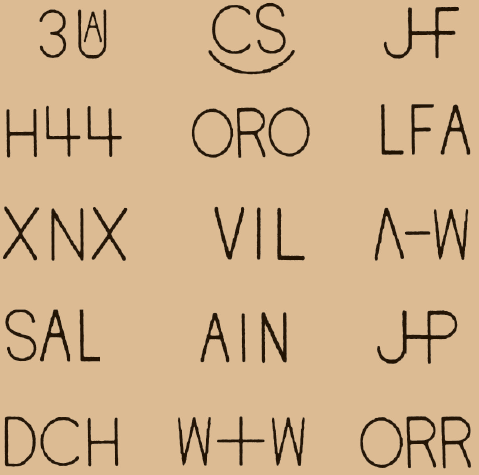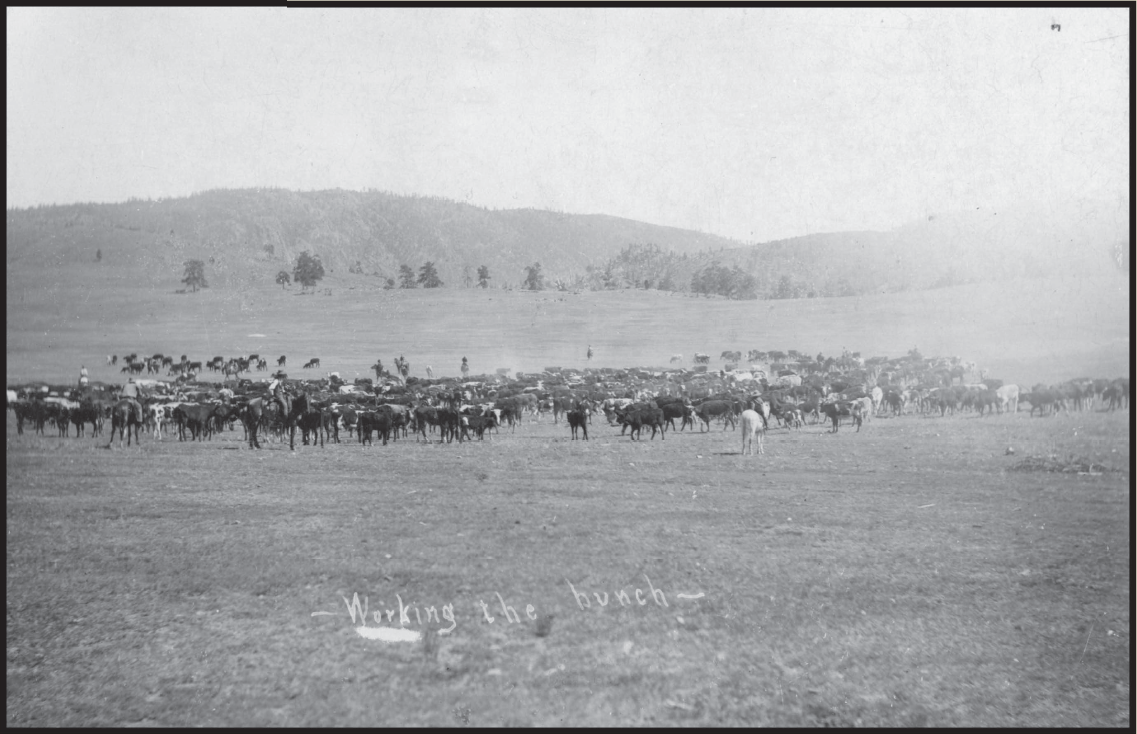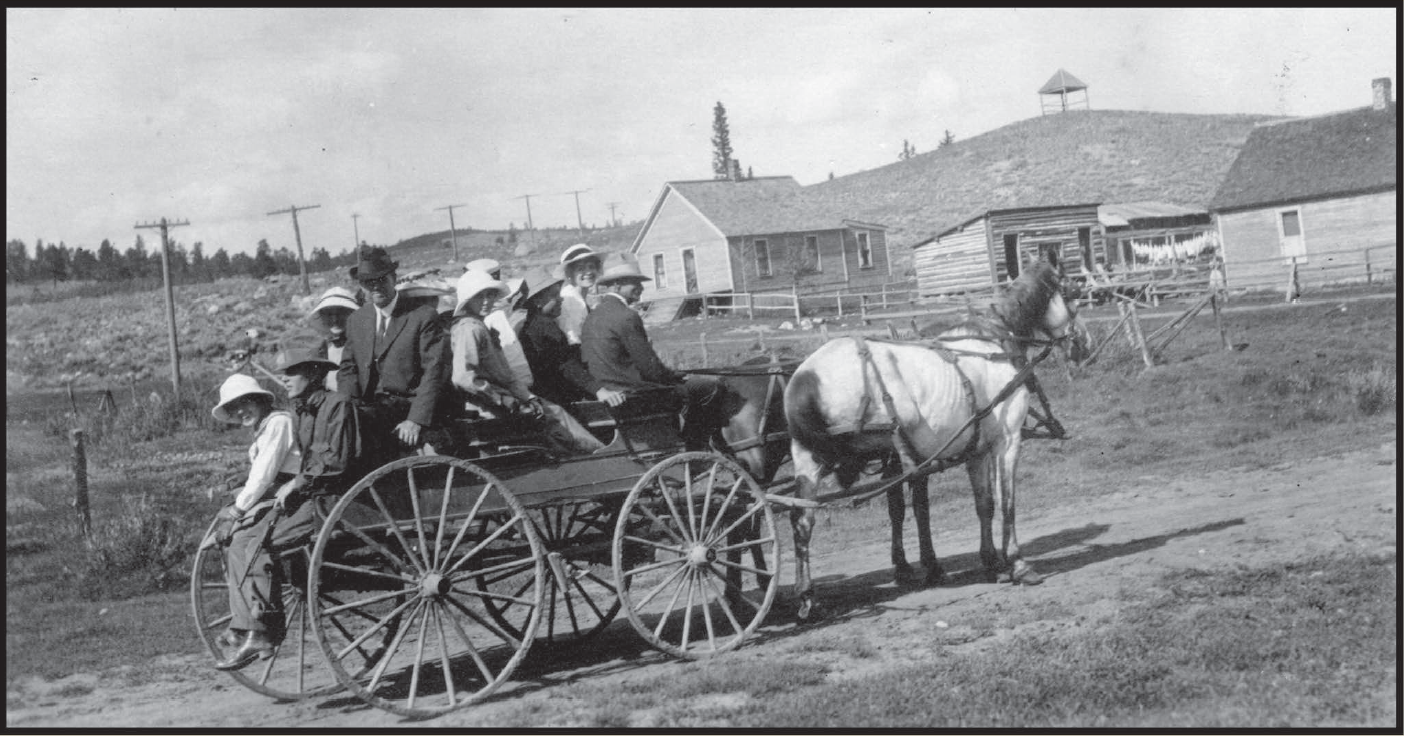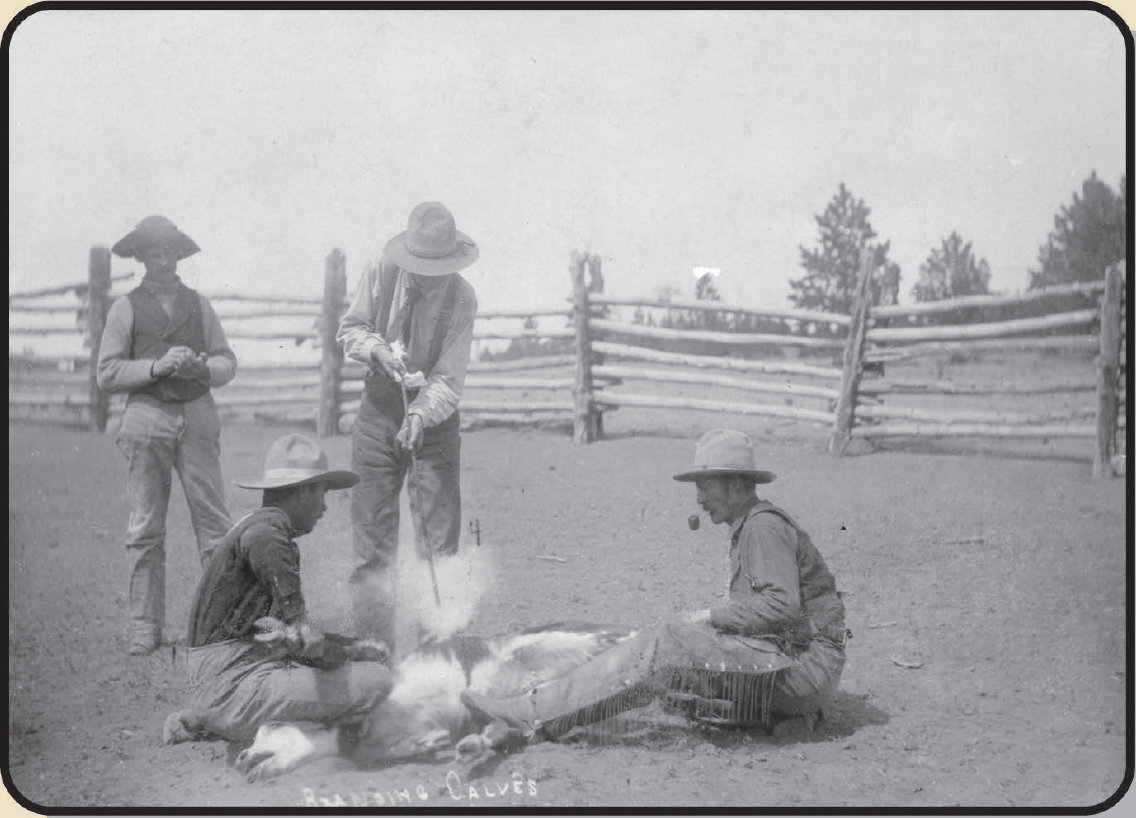Pathway into History
Ranching in Pleasant Valley
As trains brought in more produce,
Homesteaders did not as much money from their crops, so they raised cattle. By 1880, ranching was firmly established in Pleasant Valley. Nearly all the early homesteaders of Pleasant Valley ran a family operation with a few cattle. No large ranch headquarters existed in the area. Those not fortunate to own enough land for cattle worked for those who did.
Working the Cattle
Cooperative efforts were necessary to maintain cattle since most could not afford hiring more than one or two ranch hands. Cattle grazed on open, unfenced land with herds mingling together. After roundups, the selected steers were driven along the wagon roads to the railroad shipping point. At Howard, there was a corral and chute to load the steers into railroad cars. Eight to ten railroad cars of cattle were shipped out of Howard to markets in Denver and Kansas City each fall.
Identifying the Herd
Whether it was cattle rustling or herd sorting, brands enabled each rancher to correctly identify and separate his own cattle from a mixed herd. Each brand is required to be unique and must be difficult to modify or imitate. By 1885, Pleasant Valley boasted sixteen unique brands legally registered and recorded with the State Brand Inspector.
Roundups and Working the Cattle
Imagine a month out on a roundup with only your saddle, chaps, rope, spurs, and slicker. Ranchers often worked together at spring and fall roundups to brand calves and to separate the three-year-old steers for market. Cattle were gathered to a bunching area. Ropers would separate the calves and call out the brand of the mother for the calf. Mistakes were not taken lightly. Meals were available any time at the chuckwagon. Storytelling and cards served as evening entertainment.
Royal Gorge Regional Museum and History Center photo, circa 1890
Click the image to the right for a full-sized version
Family Travel
Breaks from the ranch routine were welcomed. Occasional shopping trips to nearby towns were enjoyable and necessary to purchase certain supplies and food.
Calf Branding
Most calf branding occurred in the spring or early summer and required several men. While branding irons heated in the fire, ropers roped each calf, wrestled it to the ground, and tied is feet. The branding cowboy held the hot branding iron momentarily on the calf’s flank. Calves were branded at a young age so their brands would stay with them as they grew to adults.
Royal Gorge Regional Museum and History Center photo, 1897



